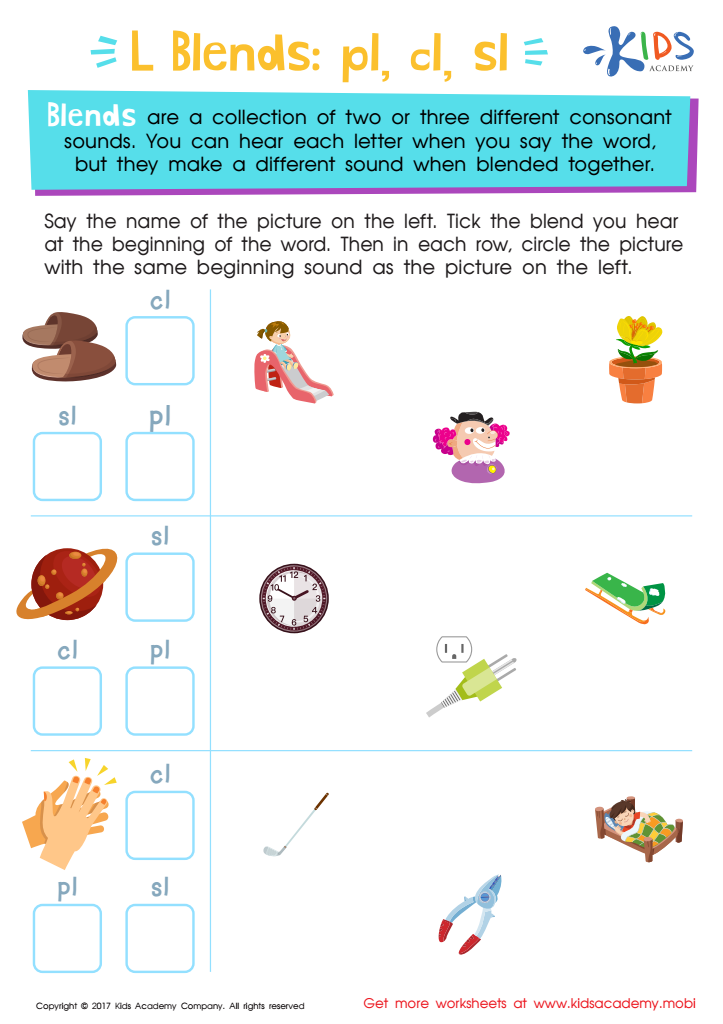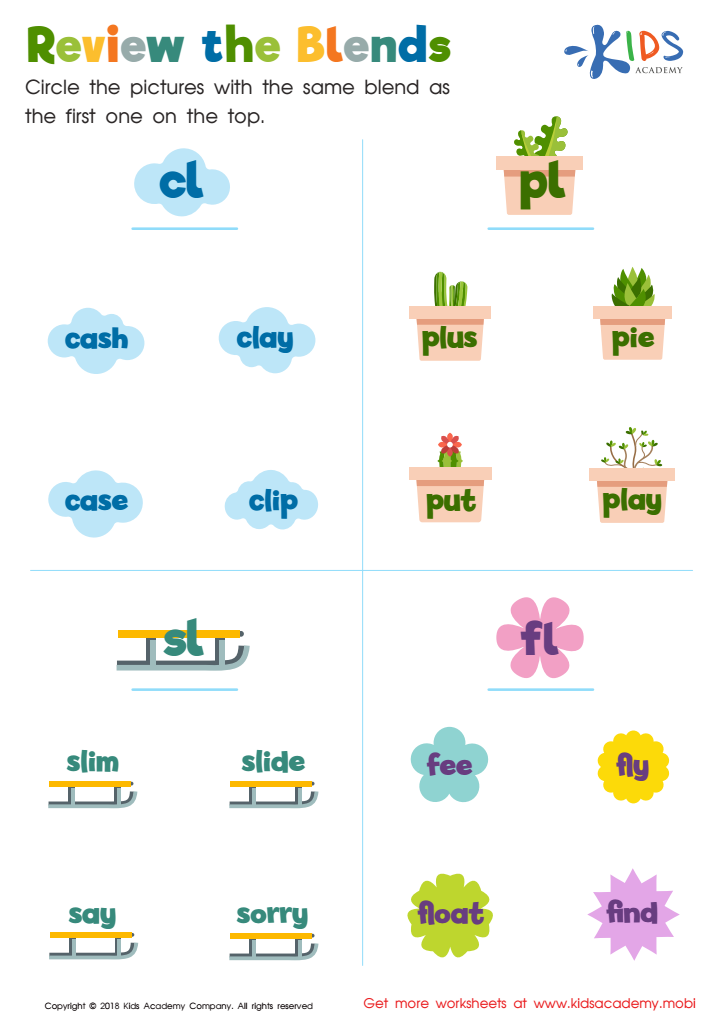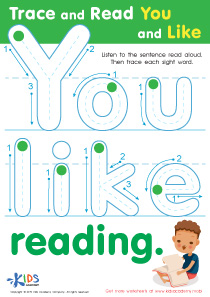Normal Difficulty First Grade Initial and Final Consonant Blends Printable Worksheets
4 filtered results
-
From - To
Education Initial and Final Consonant Blends Normal Difficulty Worksheets for Grade 1
Our Normal Difficulty Initial and Final Consonant Blends Worksheets are a fantastic resource for Grade 1 students who are honing their phonics and reading skills. These worksheets are designed to help children recognize and pronounce initial and final consonant blends, such as 'br', 'gr', 'st', and 'sw'. The worksheets are engaging and interactive, featuring a variety of exercises that encourage students to identify, match, and write words with initial and final consonant blends. With our Normal Difficulty Initial and Final Consonant Blends Worksheets, students will gain a better understanding of the building blocks of language, making them better readers and writers in the future.


Blending Consonants: "Fl", "Bl" and "Gl" Printable


L Blends: "Pl", "Cl" and "Sl" Printable


Consonant Blends: "Dr" and "Tr" Printable


Review the Blends Worksheet
The Importance of Normal Difficulty Worksheets on Initial and Final Consonant Blends
Initial and final consonant blends are an important aspect of reading and speaking English. By understanding how to blend consonant sounds together, children can improve their reading abilities and become more confident when speaking. That is why Normal Difficulty worksheets on initial and final consonant blends are essential tools for teaching English language learners in Grade 1.
Initial consonant blends refer to two or three consonants that appear at the beginning of a word. For example, the word “stop” has an initial consonant blend of “st.” Final consonant blends, on the other hand, appear at the end of a word, such as in the word “post” which has a final consonant blend of “st.” By understanding how to blend consonant sounds together, children can improve their reading abilities and become more confident when speaking.
One of the benefits of using Normal Difficulty worksheets on initial and final consonant blends is that they provide a visual aid to children who are learning to read. The worksheets often use colorful pictures to help children identify which consonant sounds are being blended together, making the learning process more engaging and fun. The worksheets also provide clear, concise explanations of how to blend consonant sounds together, allowing children to quickly grasp the concept and apply it to their reading and speaking skills.
Another benefit of using Normal Difficulty worksheets on initial and final consonant blends is that they help build important phonological awareness skills. Phonological awareness refers to the ability to identify and manipulate sounds within words. By learning to blend consonant sounds together, children begin to develop a better understanding of how words are made up of smaller sounds, which is an essential skill for reading and spelling.
Using Normal Difficulty worksheets on initial and final consonant blends can also help improve children’s overall literacy skills. As they become better at blending consonant sounds together, they will be able to read more fluently and accurately. This can help them become more confident readers, which can have a positive impact on their academic performance.
In addition to improving literacy skills, Normal Difficulty worksheets on initial and final consonant blends can also improve children’s communication skills. By learning to blend consonant sounds together, children will become more confident when speaking, which can help them express themselves more effectively. This can have a positive impact on their social and emotional development, as well as their overall academic success.
Overall, Normal Difficulty worksheets on initial and final consonant blends are an essential tool for teaching English language learners in Grade 1.

 Assign to My Students
Assign to My Students














